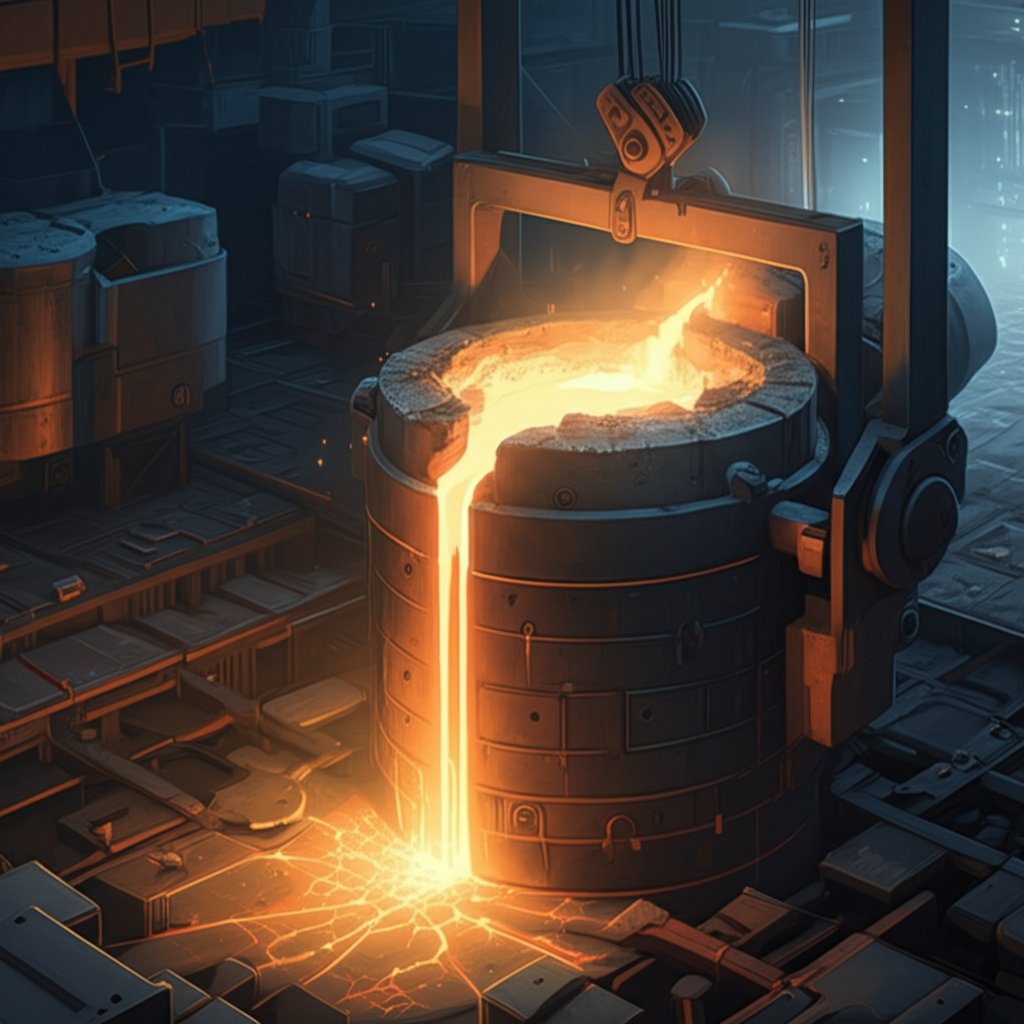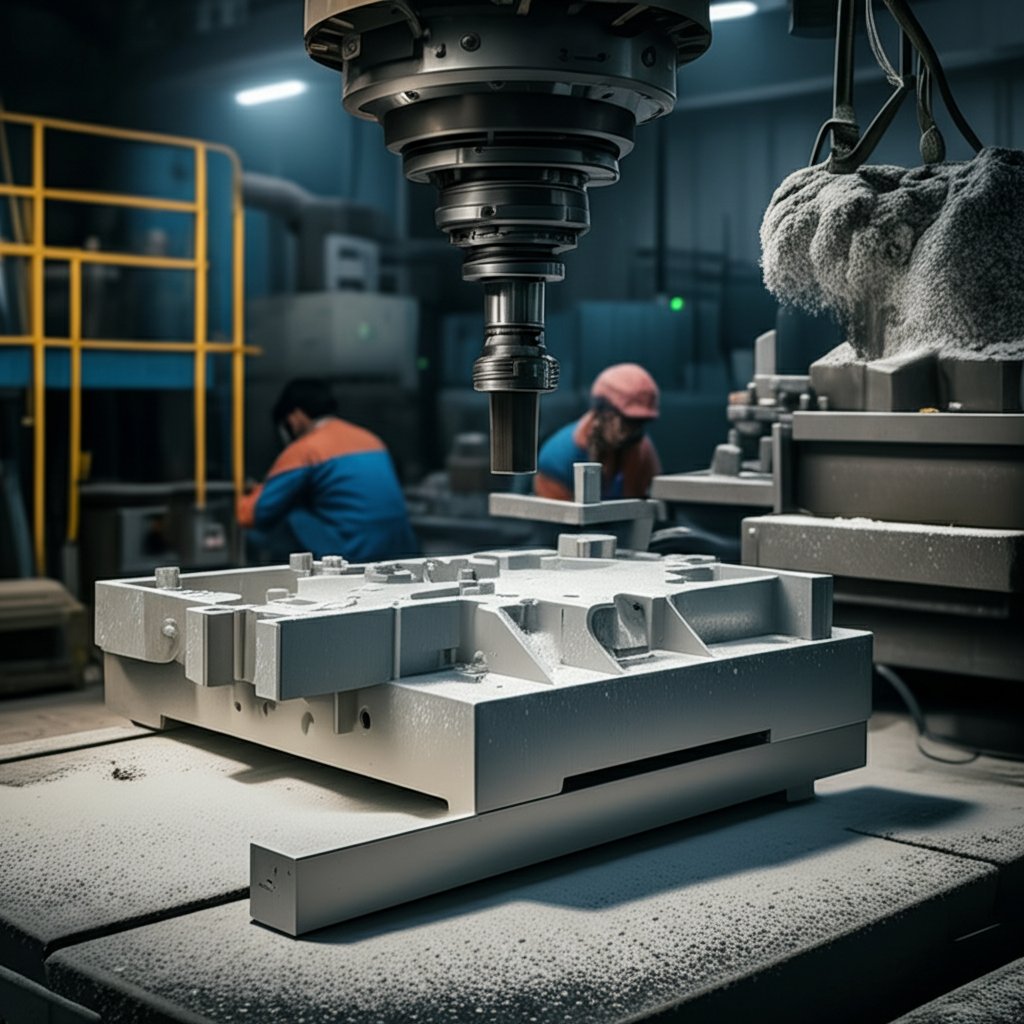
Have you ever wondered why aluminum is such a versatile material in industries ranging from packaging to construction? The answer lies partly in its melting point, a critical factor that influences how aluminum is used in various applications. Understanding the aluminum melting point is essential for anyone involved in manufacturing or material science, as it affects not only the processing techniques but also the performance of the final product.
Aluminum, in its pure form, melts at approximately 660°C (1220°F). This precise melting point of aluminum makes it ideal for applications requiring a balance of strength and malleability. However, aluminum is rarely used in its pure form. It is often alloyed with other metals to enhance its properties, which can alter its melting behavior. These alloy nuances are crucial as they determine the temperature range within which the material can be processed and utilized effectively.
In the packaging industry, for instance, the ability to recycle aluminum efficiently is largely dependent on its melting characteristics. Meanwhile, in construction, the melting point plays a role in determining how aluminum can be safely and effectively used in structural applications. From automotive parts to aerospace components, the significance of the aluminum melting point is undeniable.
As we delve deeper into this topic, we will explore how different forms of aluminum, such as foils and cans, behave under heat, and how measurement techniques are employed to ensure precision in applications. Whether you are a manufacturer, engineer, or simply curious about materials science, understanding the melting point of aluminum opens doors to innovative uses and applications.

Imagine you're in the midst of designing a new product, and you need a material that is lightweight, durable, and versatile. This is where aluminum shines, largely thanks to its melting point of approximately 660°C (1220°F). This characteristic is not just a number on a datasheet; it plays a pivotal role in how aluminum is utilized across various industries.
In manufacturing, the importance of aluminum melting point cannot be overstated. It influences the energy efficiency of processes such as casting and welding, where precise temperature control is crucial to avoid defects and ensure quality. Here's how this melting point impacts several key sectors:
Moreover, the melting point is critical in determining the thermal management capabilities of aluminum in electronics, where it serves as an excellent heat sink due to its ability to efficiently dissipate heat.
Understanding these applications highlights why the melting point of aluminum is more than just a technical specification. It is a key factor that drives innovation and efficiency across multiple industries, ensuring that aluminum remains a material of choice for engineers and manufacturers worldwide.
When considering the melting point of aluminum, several factors come into play that can significantly influence its behavior under heat. Understanding these factors affecting aluminum melting point is crucial for industries that rely on aluminum's versatility and efficiency. So, what exactly affects this melting range?
One of the primary factors is the purity of the aluminum. Pure aluminum has a consistent melting point of 660°C (1220°F). However, commercial-grade aluminum often contains impurities like iron and silicon, which can lower the melting point and alter melting behavior. For instance, high-purity aluminum (99.99% pure) will have a more precise and higher melting point compared to lower-purity grades.
Aluminum is frequently alloyed with elements such as copper, magnesium, silicon, and zinc to enhance specific properties. Each of these elements affects the melting point differently:
Environmental conditions, such as temperature and pressure, also play a significant role. Under standard atmospheric pressure, aluminum melts at its typical melting point. However, under high-pressure conditions, the melting point can increase, while in a vacuum or low-pressure environment, it may decrease. These variations, though minor, can be significant in specialized industrial processes.
To illustrate these differences, consider the following table comparing various aluminum grades and their melting points:
| Aluminum Grade | Melting Point Range (°C) | Melting Point Range (°F) |
|---|---|---|
| Pure Aluminum | 660 | 1220 |
| 2024 (Aluminum-Copper) | 502–638 | 935–1180 |
| 5052 (Aluminum-Magnesium) | 607–649 | 1125–1200 |
| 4047 (Aluminum-Silicon) | 577–582 | 1071–1079 |
| 7075 (Aluminum-Zinc) | 477–635 | 891–1175 |
Understanding these factors allows manufacturers and engineers to select the appropriate aluminum type for their specific needs, ensuring optimal performance and efficiency. As we explore further, the next section will delve into how different forms of aluminum, like foils and cans, exhibit unique melting behaviors.
When it comes to aluminum, its versatility is showcased in various forms, such as aluminum foil and cans, each exhibiting distinct melting behaviors. While the aluminum foil melting point remains consistent with pure aluminum at 660°C (1220°F), its thinness and high surface area affect how it interacts with heat. This makes aluminum foil a fascinating subject in both manufacturing and recycling contexts.
Aluminum foil is renowned for its excellent heat conduction properties. Its thinness allows for rapid heat transfer, making it ideal for applications requiring quick thermal response, such as in cooking and packaging. Despite its thinness, the melting point remains unchanged, as the physical form does not affect the intrinsic melting temperature of the metal. This is crucial in recycling, where aluminum foil can be melted and reused efficiently without altering its properties.
On the other hand, aluminum cans, typically made from aluminum alloy, exhibit slightly different melting behaviors due to their composition and thickness. While the base melting point hovers around the same temperature, the presence of alloying elements can slightly alter the melting range, enhancing properties such as strength and durability.
Understanding these differences is vital for industries that rely on aluminum's adaptability. Whether it's in packaging, where quick heat transfer is needed, or in beverage storage, where durability is paramount, recognizing how form affects function can lead to more efficient use of resources.
As we continue to explore aluminum's properties, the next section will delve into the specific temperature thresholds of popular aluminum alloys, providing deeper insights into their applications and benefits.

When you think about aluminum, you might picture the shiny, lightweight material used in soda cans or foil. But did you know that aluminum alloys, like 6061, have specific melting points that make them indispensable across various industries? Let's dive into the specifics of 6061 aluminum and the melting characteristics of aluminum oxide to understand their significance in manufacturing and surface treatments.
The 6061 aluminum melting point ranges from 582°C to 652°C (1080°F to 1205°F), making it a popular choice for applications requiring a balance of strength and workability. This alloy is part of the 6000 series, which is known for its excellent corrosion resistance and good mechanical properties. It's widely used in aerospace, automotive, and construction industries for components like aircraft fittings, bike frames, and marine hardware. The versatility of 6061 aluminum lies in its ability to be easily machined and welded, while maintaining structural integrity under stress.
Imagine you're designing a lightweight yet durable bicycle frame. The ability to mold 6061 aluminum into complex shapes without compromising its strength is crucial. This alloy's melting range allows for precise temperature control during processing, ensuring high-quality results.
Aluminum naturally forms an oxide layer when exposed to air, which significantly impacts its surface properties. The aluminum oxide melting point is approximately 2072°C (3762°F), much higher than that of pure aluminum. This oxide layer plays a vital role in surface treatments, such as anodizing, where it is thickened to enhance durability and aesthetics. Anodizing creates a hard, wear-resistant surface that protects the underlying aluminum from corrosion, making it ideal for applications where longevity and appearance are paramount.
Consider the use of anodized aluminum in architectural elements. The enhanced protective layer not only prolongs the life of the material but also allows for a variety of decorative finishes, adding both functional and aesthetic value.
As we explore these alloys and oxides, it's important to recognize the role of manufacturers like Shengxin Aluminum, who provide high-quality profiles tailored to specific industry needs. With extensive experience and advanced production capabilities, Shengxin Aluminum ensures that their products meet the stringent requirements of modern engineering applications, from eco-friendly building materials to sophisticated transportation systems.
Understanding the melting points of aluminum alloys and oxides is crucial for selecting the right material for your project. As we continue, we'll compare aluminum's melting point in different temperature scales and discuss its implications for global industry standards.
When it comes to the aluminum melting point, understanding it in both Celsius and Fahrenheit is crucial for global industries. The melting point of pure aluminum is approximately 660°C, which translates to 1220°F. This dual understanding is essential not only for international collaboration but also for ensuring precision in various manufacturing processes.
Why does this matter? Imagine you are working in a multinational company where different teams use different temperature scales. Miscommunication can lead to processing errors, affecting product quality and safety. Thus, aligning on temperature scales is more than a technical detail; it's a necessity for seamless operations.
Globally, industries adhere to specific standards that dictate which temperature scale to use. For instance, the International System of Units (SI) predominantly uses Celsius, whereas the United States often employs Fahrenheit. This duality necessitates a clear understanding of both scales, particularly in industries like aerospace and automotive, where precision is paramount.
Let's consider a few processing techniques and their typical temperature ranges, expressed in both Celsius and Fahrenheit:
These examples illustrate how crucial it is for engineers and technicians to convert and understand temperature settings accurately, ensuring that aluminum is processed under optimal conditions.
As industries continue to globalize, the ability to navigate between Celsius and Fahrenheit becomes increasingly important. It ensures that everyone, from suppliers to manufacturers, is on the same page, facilitating smoother operations and higher-quality outcomes. Next, we will explore how aluminum's melting behavior influences its applications in both industrial and DIY settings, providing further insights into its versatile nature.
Measuring the aluminum melting point with precision is crucial for industries that rely on this metal's unique properties. Whether in a laboratory setting or on-site at a manufacturing facility, accurate measurements ensure that aluminum is processed correctly, maintaining its integrity and performance. Let's explore the various methods used to accurately measure aluminum's melting point, highlighting their pros and cons.
In controlled environments, laboratory methods offer high precision in measuring the melting point of aluminum. These methods include:
For industrial applications, on-site measurement tools provide flexibility and real-time data, essential for process adjustments:
Here's a summary table comparing these techniques:
| Technique | Pros | Cons | Common Use Cases |
|---|---|---|---|
| DSC | High precision, detailed analysis | Expensive, requires expertise | Research, development |
| TGA | Comprehensive, suitable for alloys | Time-consuming | Alloy analysis, quality control |
| Infrared Pyrometers | Non-contact, real-time data | Requires calibration | Industrial processing, continuous monitoring |
| Thermocouples | Cost-effective, easy to use | Potential accuracy issues | General industrial use, quick checks |
| Optical Pyrometers | Precise, non-contact | Complex setup | High-temperature environments, non-contact scenarios |
By selecting the appropriate measurement technique, industries can ensure that aluminum is processed under optimal conditions, enhancing product quality and operational efficiency. As we move forward, we'll explore how these measurements impact aluminum's applications in both industrial settings and DIY projects.

When you think about the aluminum melting point applications, it's fascinating to see how this characteristic is leveraged in both industrial and DIY settings. Aluminum's relatively low melting point of approximately 660°C (1220°F) makes it a prime candidate for various manufacturing processes, such as casting and extrusion, which are pivotal in creating everything from automotive parts to architectural structures.
In industrial settings, the melting point of aluminum is crucial for processes like casting and extrusion. During casting, aluminum is melted and poured into molds to create complex shapes with precision. This process is widely used in the automotive industry to produce lightweight engine components that enhance vehicle efficiency. Similarly, in the construction sector, aluminum's ability to be extruded into long, uniform profiles is essential for creating structural elements and façade systems.
Shengxin Aluminum, for instance, excels in providing high-quality aluminum profiles that meet the stringent demands of modern engineering. Their capabilities in extrusion and casting are supported by advanced technologies that ensure precision and consistency, making them a preferred choice for industries requiring reliable aluminum solutions.
For DIY enthusiasts, aluminum's melting point opens up a world of creative possibilities. Imagine crafting custom jewelry or small-scale sculptures by melting aluminum in a homemade furnace. A simple setup using a 5-gallon bucket, as detailed in various online tutorials, can allow hobbyists to melt aluminum safely and efficiently. This method, which involves using charcoal as a fuel source and a hair dryer for airflow, enables quick melting, making it accessible for those looking to experiment with metal casting at home.
While these DIY projects are exciting, they require careful attention to safety. Wearing protective gear and working in a well-ventilated area are crucial to prevent accidents and exposure to fumes.
Whether in an industrial plant or a backyard workshop, understanding and utilizing the melting point of aluminum can lead to innovative applications and projects. As industries continue to evolve, the role of aluminum remains significant, driven by its adaptable nature and the expertise of manufacturers like Shengxin Aluminum, who push the boundaries of what can be achieved with this versatile metal.
Next, we'll explore the common mistakes to avoid when handling aluminum at high temperatures, ensuring safe and efficient operations.
Working with aluminum at high temperatures can be a rewarding yet challenging task. While the metal’s relatively low melting point of 660°C (1220°F) makes it ideal for various applications, it also necessitates careful handling to avoid common pitfalls. Whether in an industrial setting or a DIY project, understanding how to manage aluminum’s thermal properties is crucial for both safety and efficiency.
Handling aluminum at elevated temperatures requires awareness of several potential hazards and mistakes that could compromise both the material and the safety of the handlers:
To avoid these common mistakes, consider the following best practices when working with aluminum at high temperatures:
By understanding and mitigating these risks, you can ensure that your aluminum handling processes are both safe and efficient. As we continue to explore aluminum's properties, recognizing these common oversights will help maintain high standards in both industrial applications and DIY projects. In the next section, we will summarize the key takeaways about aluminum’s melting point and its variations, reinforcing the importance of accurate measurement and handling.
As we wrap up our exploration of the aluminum melting point, it becomes clear that this fundamental property is more than just a technical specification. It is a cornerstone for industries ranging from automotive to aerospace, influencing how aluminum is processed and applied. Understanding the nuances of aluminum's melting point, including its variations across different alloys and forms, is essential for optimizing its use in diverse applications.
Throughout this article, we've delved into how factors like purity levels, alloy compositions, and environmental conditions can affect the melting behavior of aluminum. We've also examined the practical implications of these variations, from the efficient recycling of aluminum foil to the robust performance of aluminum alloys like 6061 in demanding environments. Accurate measurement techniques, such as using infrared pyrometers and differential scanning calorimetry, are crucial in ensuring that aluminum is processed under ideal conditions, thereby enhancing product quality and operational efficiency.
Moreover, the role of manufacturers like Shengxin Aluminum cannot be overstated. With their advanced production capabilities and commitment to quality, Shengxin Aluminum provides high-quality profiles that meet the stringent demands of modern engineering applications. Whether you're involved in large-scale industrial projects or innovative DIY endeavors, Shengxin's offerings are worth exploring for reliable and efficient aluminum solutions.
As you consider the applications and handling of aluminum in your projects, remember the importance of accurate measurement and careful management of its melting point. By doing so, you can harness the full potential of this versatile metal, ensuring both safety and efficiency in your endeavors. For more information on high-quality aluminum profiles and solutions, visit Shengxin Aluminum and discover how they can support your next project.
Aluminum does not change color before melting, making it challenging to gauge when it's reaching its melting point. Additionally, molten aluminum forms a heavy oxide layer, which has a much higher melting point, complicating the melting process.
Aluminum melts faster because it has a lower melting point of 660°C compared to steel, which typically melts between 1371°C to 1593°C, depending on the carbon content.
Tungsten is the hardest metal to melt, with a melting point of 3,399°C. This property makes tungsten ideal for high-temperature applications.
Aluminum's melting point is crucial for processes like casting and extrusion, impacting efficiency and product quality in industries such as automotive and aerospace.
Alloying aluminum with other metals alters its melting point, enhancing specific properties like strength and corrosion resistance, which is vital for tailored industrial applications.
 Интернет Сервис
Интернет Сервис 0086 136 3563 2360
0086 136 3563 2360 sales@sxalu.com
sales@sxalu.com +86 136 3563 2360
+86 136 3563 2360